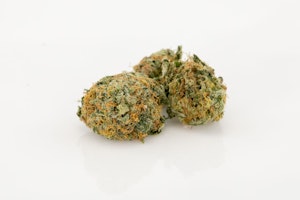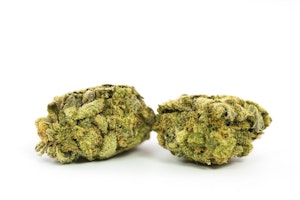
elsa olofsson / unsplash
Sativa vs. Indica: Does the Difference Still Matter in 2025?
Why sativa and indica labels don't tell the full story.
Most cannabis consumers still rely on the terms sativa and indica to guide their choices, but those labels don’t always reflect what’s actually in the jar. People often ask, “Does indica or sativa matter anymore?” The short answer: not in the way we’ve been taught to think. These terms were never meant to explain how a strain will make you feel, and the science behind them has only gotten more complicated.
Why Indica and Sativa Classifications Mean Less Today
The Origin of the Terms

elsa olofsson / unsplash
Cannabis was originally categorized into three types: Cannabis sativa, Cannabis indica, and Cannabis ruderalis. These labels originated from 18th-century botanists like Linnaeus and Lamarck, who based their classifications on physical traits and geographic origins.
- Sativa plants were tall, narrow-leafed, and cultivated in Europe and Western Asia for their fiber and seeds.
- Indica plants were shorter and bushier, and were grown in Central and South Asia for their psychoactive resin.
- Ruderalis plants, wild-type varieties with low THC, evolved in colder climates and later contributed autoflowering genetics.
Today, botanists recognize cannabis as a single species, Cannabis sativa L., with two subspecies:
- Cannabis sativa subsp. sativa (used industrially)
- Cannabis sativa subsp. indica (used medicinally)
Within those subspecies are several varieties:
- C. sativa subsp. sativa var. sativa (broad-leaf hemp)
- C. sativa subsp. sativa var. chinensis (narrow-leaf hemp)
- C. sativa subsp. indica var. indica (narrow-leaf drug)
- C. sativa subsp. indica var. afghanica (broad-leaf drug)
Ruderalis is formally known as C. sativa subsp. sativa var. spontanea. While not typically used for recreational effects, it’s the genetic source of the autoflowering trait used in many modern hybrids, unlike photoperiod cannabis, which flowers based on light, and ruderalis flowers based on age, a trait valued by cultivators for simplicity and speed.
From Botany to Branding

Davide Ragusa / Unsplash
Over time, the cannabis industry began using “sativa” and “indica” to describe effects instead of origin. Uplifting? Call it sativa. Sedating? Label it indica. But this shift created confusion.
For example:
- Narrow-leaf drug varieties (botanically indica var. indica) were often mislabeled as “sativa” because of their energetic effects.
- Broad-leaf drug varieties (indica var. afghanica) were labeled “indica” based on their heavier, body-focused effects.
This mismatch between taxonomy and consumer expectations is why the sativa/indica divide no longer holds up.
The Role of Hybrids

elsa olofsson / unsplash
Most cannabis strains today are hybrids, blending traits from multiple lineages. While some hybrids may lean toward certain effects, the label alone doesn’t predict the outcome. Just because a product is marketed as “indica-dominant” doesn’t mean it will make you sleepy.
At this point, sativa and indica are more about marketing than meaning.
No Clear Genetic Divide

Herb
Decades of crossbreeding have made pure landrace strains rare, and the genetic lines between sativa and indica are increasingly blurred. A 2022 study in PLOS ONE analyzed the genetic and chemical composition of commercial cannabis and found that indica/sativa labels didn’t consistently match genotype or chemotype. Strains sold under the same name were often genetically unrelated. Others labeled as opposite types had nearly identical profiles.
Most modern cannabis is polyhybridized, bred across multiple regions and lineages. Trying to sort it into fixed categories no longer reflects how the plant grows or how it will affect you.
Cannabinoids and Terpenes: The Real Drivers of Effects
Chemotype
Instead of relying on outdated categories, look to a plant’s chemotype, its chemical fingerprint made up of cannabinoids, terpenes, and other compounds. These elements interact in the body through what’s called the entourage effect, shaping the actual experience you’ll feel.
There are three primary chemotypes:
- Type I – High THC, low CBD (e.g., Wedding Cake, Blue Dream)
- Type II – Balanced THC/CBD (e.g., Cannatonic, Pennywise)
- Type III – High CBD, low THC (e.g., ACDC, Charlotte’s Web)
Your endocannabinoid system, metabolism, and tolerance all influence how you’ll respond, even within the same chemotype. That’s why lab results and personal experience often tell you more than a cultivar’s name.

elsa olofsson / unsplash
Genotype vs. Phenotype
Cannabinoid production is shaped by a plant’s genotype (its DNA), but how those genes are expressed, its phenotype, is influenced by the growing environment. Light cycles, temperature, drought, soil conditions, and nutrient levels all play a role.
Stress during flowering, for example, can cause a Type III hemp plant to produce more THC than expected, resulting in a “hot” crop that no longer meets legal limits. Even clones from the same mother plant can yield different chemistries depending on how they’re grown.

Jeff W / Unsplash
Terpenes and Flavonoids
Cannabis terpenes do more than give the plant its smell; they may help shape the mood, feel, and even duration of a high. Limonene may offer focus and elevation, while myrcene is associated with deeper relaxation. It’s the entire terpene profile, not just the dominant compound, that determines the outcome.
Flavonoids also contribute to a cultivar’s unique chemistry. These compounds affect color, flavor, and may offer therapeutic effects like antioxidant and anti-inflammatory support. Cannabis-specific flavonoids, such as cannflavin A and B, along with more common ones like quercetin and kaempferol, show promise in early studies; however, further research is needed.
What the Research Says

elsa olofsson / unsplash
A 2021 study in Nature Plants reinforced that strain names and categories, such as “indica” or “sativa,” do not reliably predict effects. Even cultivars with the same name, such as OG Kush, have dramatically different terpene and cannabinoid profiles depending on their source and growing conditions.
Bottom line: what’s on the label doesn’t always reflect what’s in the flower.
Want to dive deeper into terpene effects? Check out our terpene guide.
If All Strains Are Hybrid, How Do You Choose?

elsa olofsson / unsplash
If most cannabis today is a hybrid of multiple lineages, how do you choose what’s right for you?
Start with your intention.
- For energy and clarity: Look for Type I strains with pinene or limonene.
- For relaxation without heavy sedation: Try a Type II with myrcene and linalool.
- For non-intoxicating relief: Choose a Type III cultivar rich in CBD and calming terpenes like bisabolol.
Your body’s response to cannabinoids and terpenes is far more important than the name on the jar.
Read the COA (Certificate of Analysis)

Herb
When in doubt, go straight to the lab report. A Certificate of Analysis (COA) breaks down the cannabinoid and terpene content of a cannabis product, and gives you a much clearer picture than any label.
Here’s what to look for:
- Total THC and CBD: This determines the chemotype
- Dominant terpenes: Usually the top 2 to 3 listed
- Minor cannabinoids: CBG, CBC, THCV, as these can influence effects
- Visual data: Terpene wheels or bar graphs help simplify what you’re seeing
Ask your budtender to show you the COA, especially if you’re trying to dial in on specific outcomes like better sleep, less anxiety, or sharper focus.
Final Thoughts on the Sativa vs. Indica Debate

elsa olofsson / unsplash
The sativa vs indica conversation isn’t going away, but the way we interpret those terms needs to evolve. What was once used to describe physical traits and cultivation regions is now mostly marketing shorthand. It doesn’t tell you much about what the plant actually contains, or how it will affect you.
What matters more is chemistry: cannabinoids, terpenes, flavonoids, and how those interact with your body.
So next time someone asks, “Sativa or indica?” you might want to answer with a better question:
“What’s the terpene profile and cannabinoid ratio?”
Herb Recommended Products:
READ MORE










